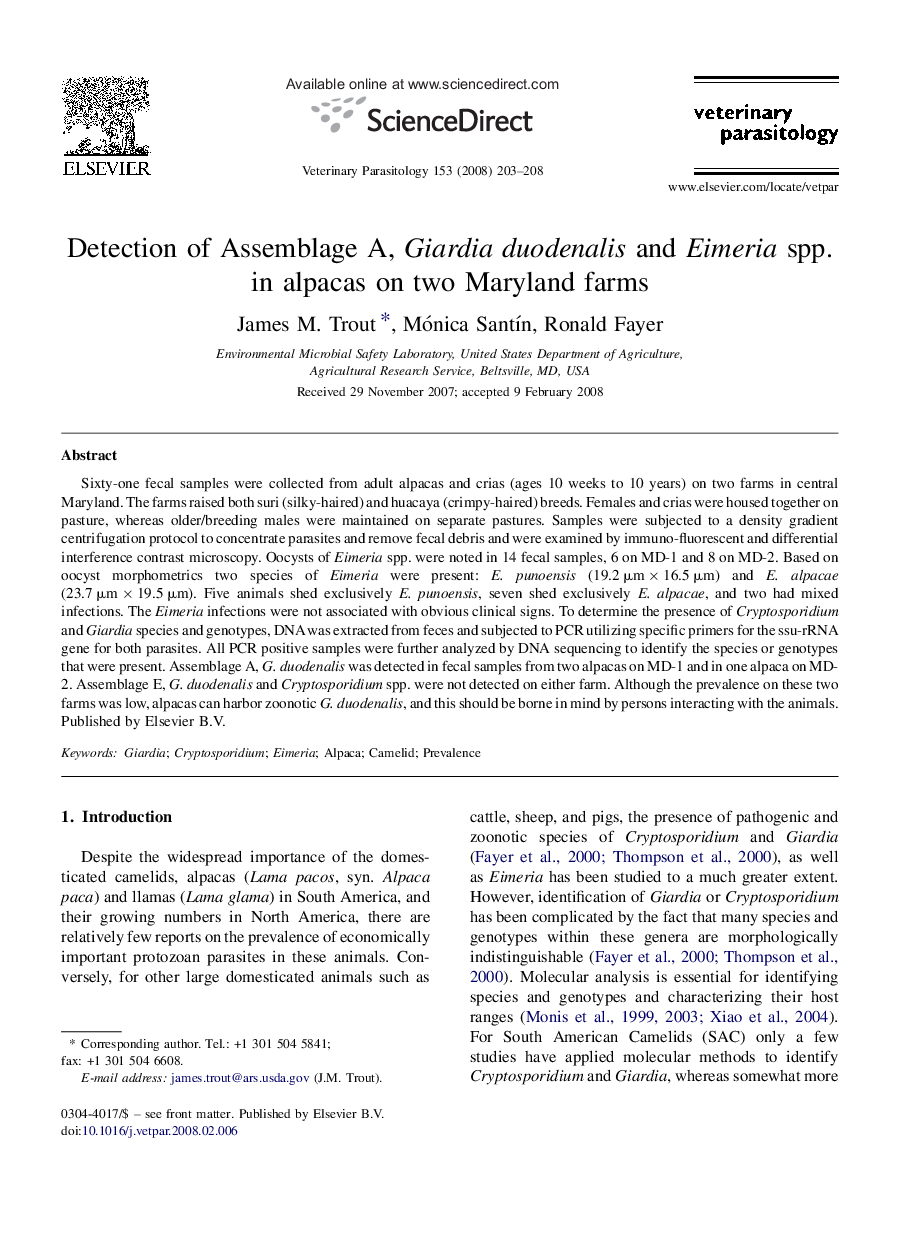| Article ID | Journal | Published Year | Pages | File Type |
|---|---|---|---|---|
| 2471703 | Veterinary Parasitology | 2008 | 6 Pages |
Sixty-one fecal samples were collected from adult alpacas and crias (ages 10 weeks to 10 years) on two farms in central Maryland. The farms raised both suri (silky-haired) and huacaya (crimpy-haired) breeds. Females and crias were housed together on pasture, whereas older/breeding males were maintained on separate pastures. Samples were subjected to a density gradient centrifugation protocol to concentrate parasites and remove fecal debris and were examined by immuno-fluorescent and differential interference contrast microscopy. Oocysts of Eimeria spp. were noted in 14 fecal samples, 6 on MD-1 and 8 on MD-2. Based on oocyst morphometrics two species of Eimeria were present: E. punoensis (19.2 μm × 16.5 μm) and E. alpacae (23.7 μm × 19.5 μm). Five animals shed exclusively E. punoensis, seven shed exclusively E. alpacae, and two had mixed infections. The Eimeria infections were not associated with obvious clinical signs. To determine the presence of Cryptosporidium and Giardia species and genotypes, DNA was extracted from feces and subjected to PCR utilizing specific primers for the ssu-rRNA gene for both parasites. All PCR positive samples were further analyzed by DNA sequencing to identify the species or genotypes that were present. Assemblage A, G. duodenalis was detected in fecal samples from two alpacas on MD-1 and in one alpaca on MD-2. Assemblage E, G. duodenalis and Cryptosporidium spp. were not detected on either farm. Although the prevalence on these two farms was low, alpacas can harbor zoonotic G. duodenalis, and this should be borne in mind by persons interacting with the animals.
